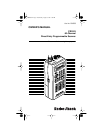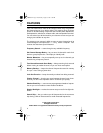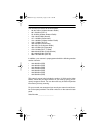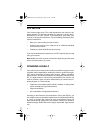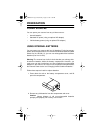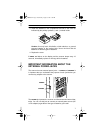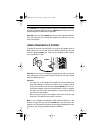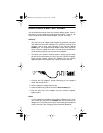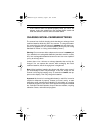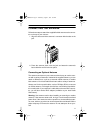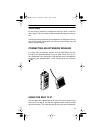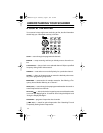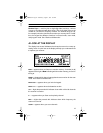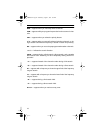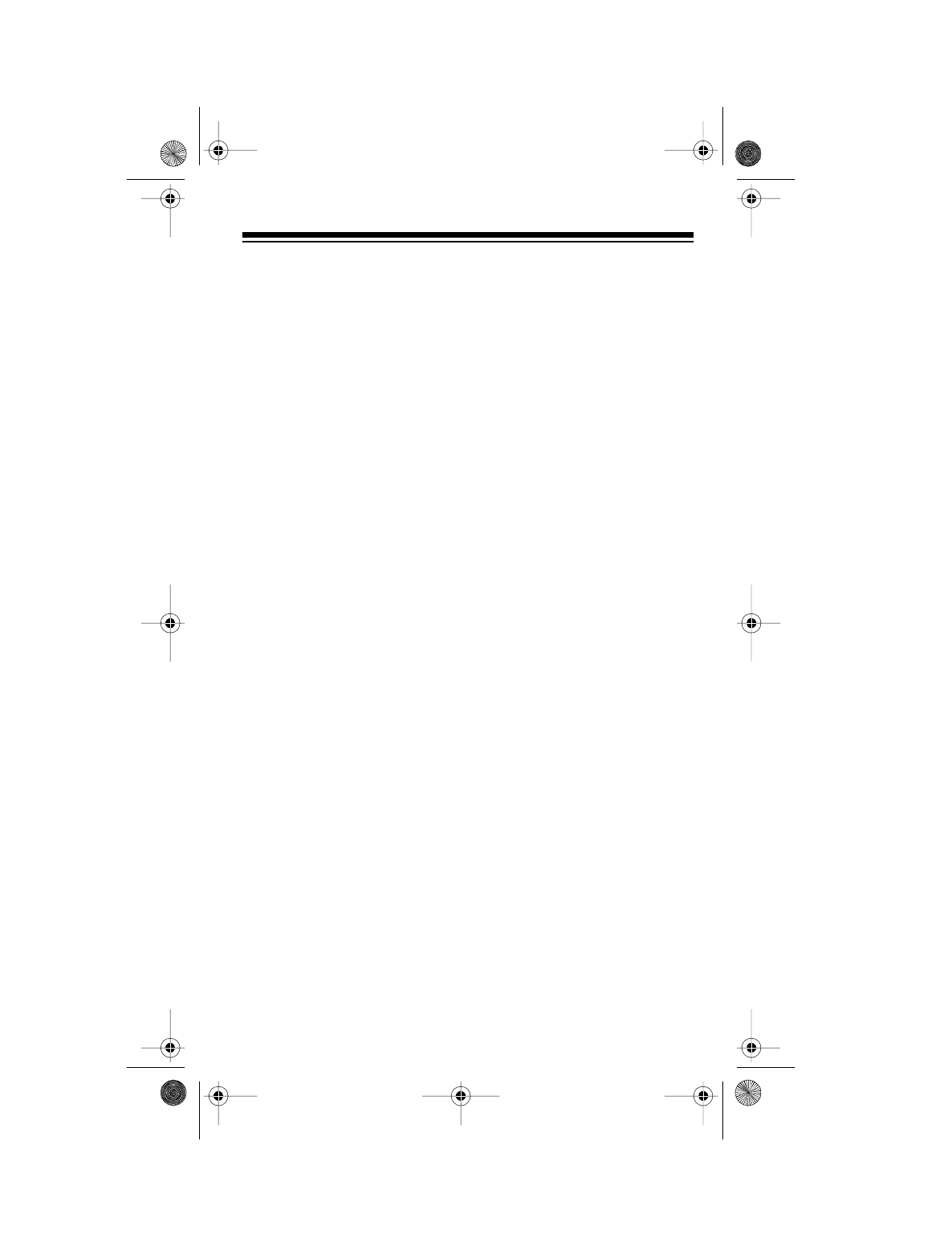
3
Your scanner can receive all of these bands:
• 29–29.7 MHz (10-Meter Amateur Radio)
• 29.7–50 MHz (VHF Lo)
• 50–54 MHz (6-Meter Amateur Radio)
• 108–136.975 MHz (Aircraft)
• 137–144 MHz (Government)
• 144–148 MHz (2-Meter Amateur Radio)
• 148–174 MHz (VHF Hi)
• 406–420 MHz (Government)
• 420–450 (70-cm Amateur Radio)
• 450–470 MHz (UHF Standard)
• 470–512 MHz (UHF “T” Band)
• 806–823.9375 MHz (Public Service)
• 851–868.9375 MHz (UHF Hi)
• 896.1125–956 MHz (UHF Hi)
In addition, your scanner is preprogrammed with the following weather
service channels:
• 162.400 MHz (NFM)
• 162.425 MHz (NFM)
• 162.450 MHz (NFM)
• 162.475 MHz (NFM)
• 162.500 MHz (NFM)
• 162.525 MHz (NFM)
• 162.550 MHz (NFM)
This owner’s manual also includes the section “A Guide to the Action
Bands,” which lets you target services in your area by giving you fre-
quency ranges to search. You can then store any of these frequencies
into memory for easy scanning.
For your records, we recommend you record your scanner’s serial num-
ber in the space provided. The serial number is on the scanner’s back
panel.
Serial Number __________________
20-509.fm Page 3 Wednesday, August 4, 1999 1:58 PM



